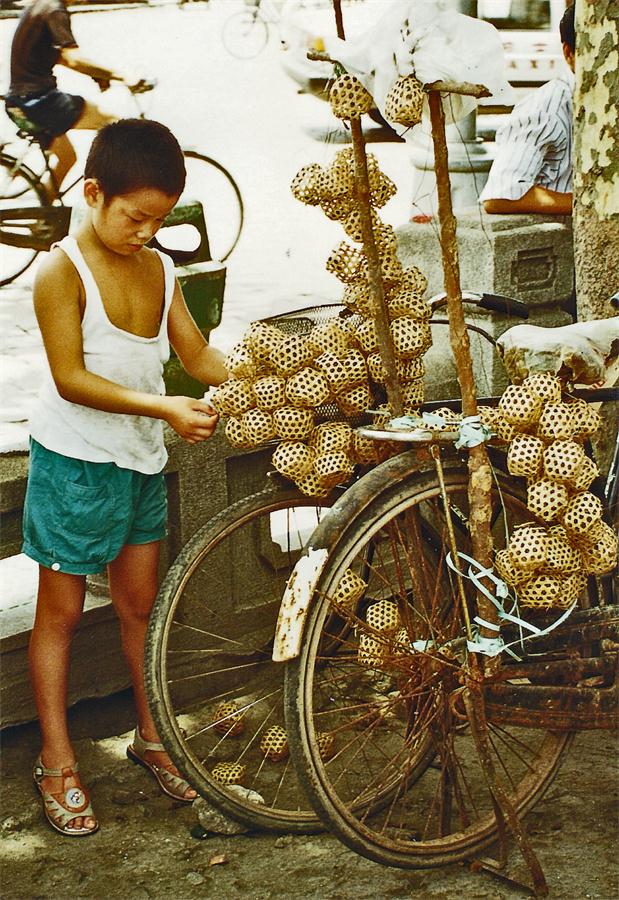
Boy with bamboo cicada boxes Suzhou 1996. [Photo by Bruce Connolly/chinadaily.com.cn]
I came to realize that the section of Suzhou Creek in Shanghai was actually man-made. Much of its course toward Suzhou is known as the Wusong River. Historically it entered the Yangtze almost where the Huangpu today flows into China's "Long River" at the mouth of the Wusong. Silting was a problem. Much of the land is flat, lying just above water level, creating only a slow moving current. In the 16th century this was alleviated by digging a narrower channel, Suzhou Creek, reaching the Huangpu close to Shanghai's Waibaidu Bridge.
I decided to head for Suzhou, one hour inland by train on a line connecting both cities since July 16, 1906. That journey repeatedly emphasized the closeness, this interface between water and the land.
Arriving at the Suzhou Railway Station, I had to insist on being taken to the hotel of my choice and not those favored by taxi drivers! I got my wish and was soon sitting in a ting, or pavilion, overlooking an arched bridge and pond in the garden of a small compound close to the southeastern corner of the former city walls. Suzhou was starting to feel relaxing.